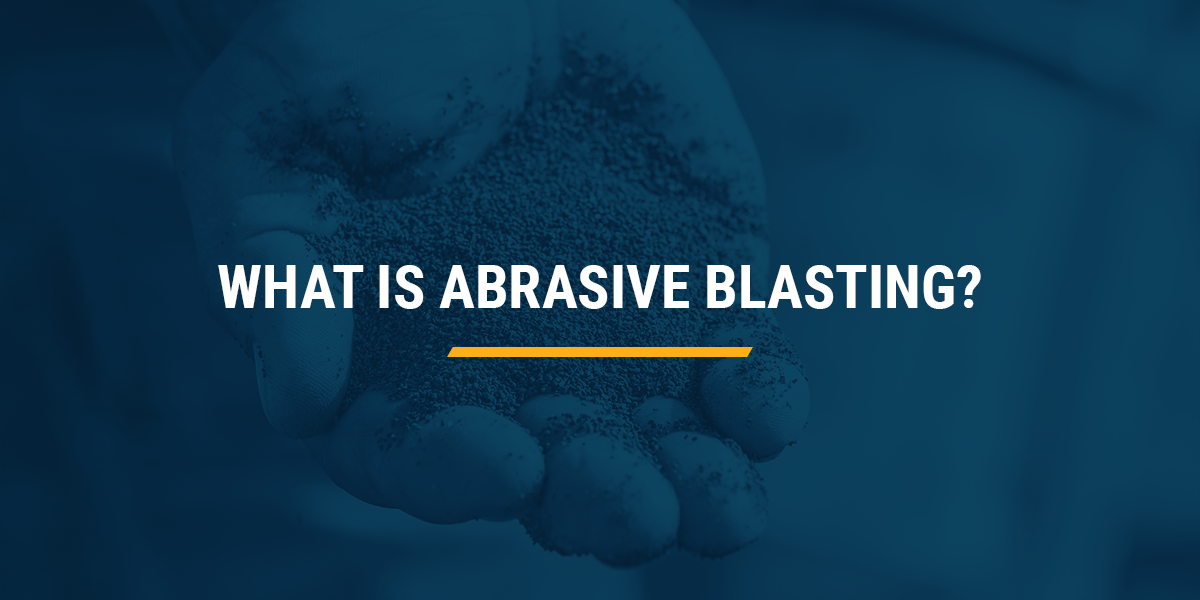If your business involves working with metals like steel or aluminum, you might have encountered issues with surface contamination—such as dirt, rust, paint, or chemicals—that can interfere with the effectiveness of finishing processes. That’s where abrasive blasting comes in. This powerful technique is a fast and efficient way to clean, prepare, and finish surfaces before applying coatings, painting, or other treatments. Abrasive blasting is a process that uses high-pressure streams of abrasive materials to clean or texture surfaces. It's commonly used to remove old coatings, scale, rust, or debris, and it can also be used to smooth or roughen a surface depending on the desired outcome. The type of abrasive material used varies based on the job, and choosing the right one is crucial for optimal results. While the term "sandblasting" is often used interchangeably with "abrasive blasting," traditional sandblasting with silica sand is no longer recommended due to health risks and inefficiency. Instead, many industries now use safer alternatives such as glass beads, steel shot, or natural media like walnut shells or corn cobs. At Finishing Systems, we offer a comprehensive guide to help you choose the best abrasive media for your specific needs. Whether you're looking for a gentle surface prep or heavy-duty cleaning, we’ve got the expertise to support your project. Contact Us Abrasive blasting offers numerous advantages for manufacturers and industrial professionals: Abrasive blasting works by using compressed air to propel small particles at high speed against a surface. This method is effective but can create a lot of dust, so proper containment and safety measures are essential. Here’s a quick step-by-step guide to the process: There are two main types of abrasive blasting: dry and wet. Dry blasting uses compressed air to propel the media directly onto the surface, while wet blasting mixes the media with water before application. Wet blasting is ideal for achieving a smoother finish, whereas dry blasting is better for aggressive cleaning and debris removal. Each method has its own advantages. Dry blasting machines can use pressure pots or suction systems, while wet blasting relies on a slurry pump to mix the media and water. Choosing the right system depends on your specific project needs and environmental considerations. Before starting your next abrasive blasting project, here are some key tips to keep in mind: Maintain an air pressure of around 110 psi for optimal performance. Lower pressure can slow things down and increase material waste. Always wear proper PPE, avoid silica-based media, and ensure good ventilation. Never work in enclosed spaces without proper airflow. Consider formal training to improve efficiency and reduce risk. Maintain your equipment regularly—replace worn nozzles, clean between projects, and follow manufacturer guidelines to extend the life of your tools. Create a well-ventilated workspace and use the correct size blast hose. A properly sized hose ensures consistent pressure and reduces material waste. Various media types are available, each suited for different applications: Consider techniques like micro-blasting for fine details or shot blasting for deep cleaning. Since 1972, Finishing Systems has helped businesses across industries achieve top-quality surface preparation and finishing. With our advanced equipment, experienced team, and commitment to customer satisfaction, we’re here to deliver the best results for your projects. Shelf Holding Buckle Beam Roll Forming Machine Shelf Buckle Beam,Buckle Beam Type Connection,Profile Of The Clasp Beam,Installation Of Buckle Beams Huai'an Senyu Intelligent Technology Co., LTD , https://www.jshasyzn.com
What Is Abrasive Blasting?
Updated: April 16, 2024
A Breakdown of Abrasive Blasting
What Are the Benefits of Abrasive Blasting?
The Abrasive Blasting Process
Dry vs. Wet Blasting: What’s the Difference?
What to Know Before Your Next Project
Boost Productivity
Prioritize Safety
Why Choose Finishing Systems?